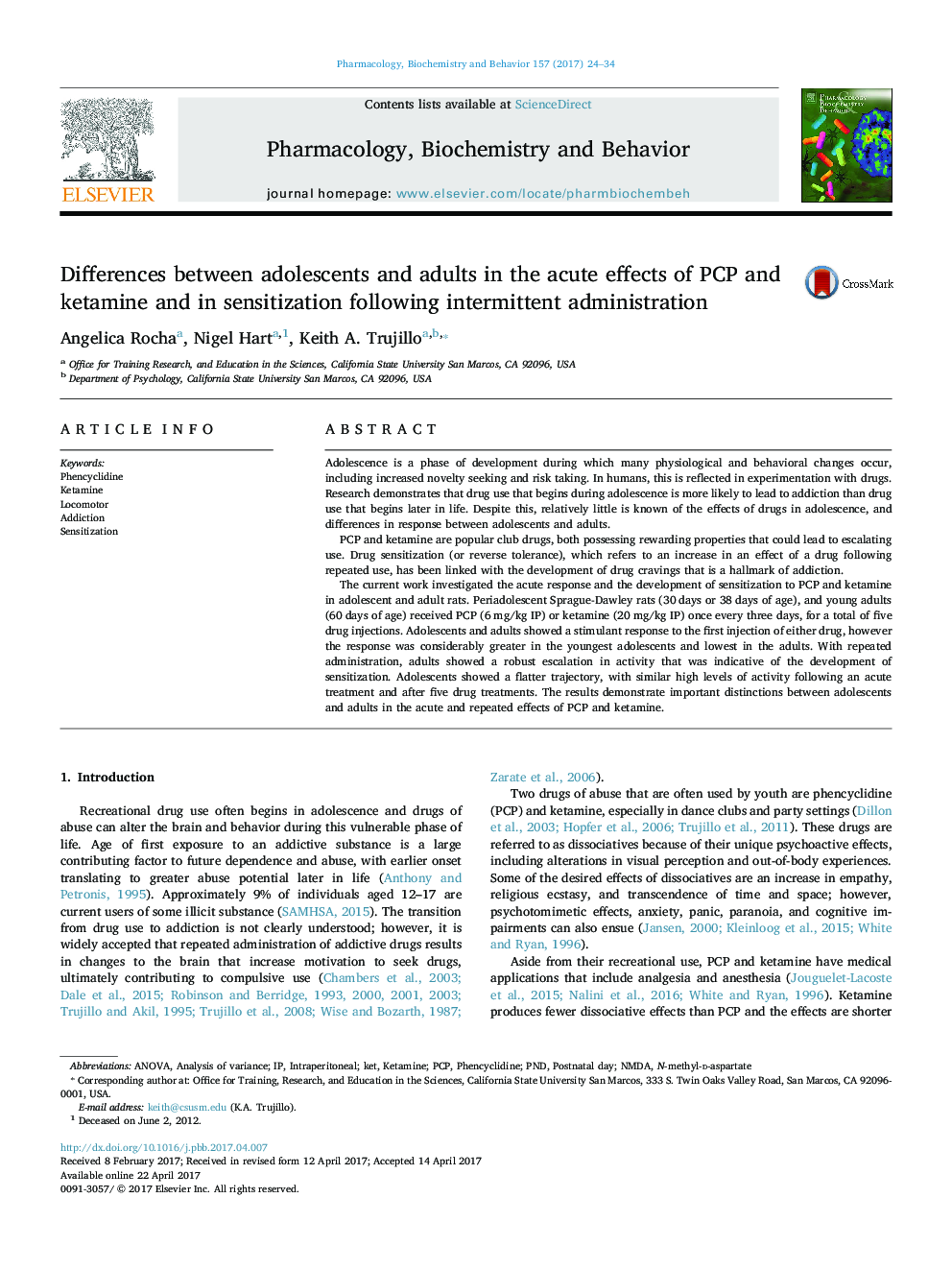| کد مقاله | کد نشریه | سال انتشار | مقاله انگلیسی | نسخه تمام متن |
|---|---|---|---|---|
| 5515237 | 1541830 | 2017 | 11 صفحه PDF | دانلود رایگان |

• Ketamine and phencyclidine are abused by young people.
• Behavioral effects of the drugs were compared in adolescent and adult rats.
• Young adolescents showed the greatest initial response to the drugs.
• Behavioral sensitization occurred and differed between adolescents and adults.
• The results have implications for drug abuse and addiction.
Adolescence is a phase of development during which many physiological and behavioral changes occur, including increased novelty seeking and risk taking. In humans, this is reflected in experimentation with drugs. Research demonstrates that drug use that begins during adolescence is more likely to lead to addiction than drug use that begins later in life. Despite this, relatively little is known of the effects of drugs in adolescence, and differences in response between adolescents and adults.PCP and ketamine are popular club drugs, both possessing rewarding properties that could lead to escalating use. Drug sensitization (or reverse tolerance), which refers to an increase in an effect of a drug following repeated use, has been linked with the development of drug cravings that is a hallmark of addiction.The current work investigated the acute response and the development of sensitization to PCP and ketamine in adolescent and adult rats. Periadolescent Sprague-Dawley rats (30 days or 38 days of age), and young adults (60 days of age) received PCP (6 mg/kg IP) or ketamine (20 mg/kg IP) once every three days, for a total of five drug injections. Adolescents and adults showed a stimulant response to the first injection of either drug, however the response was considerably greater in the youngest adolescents and lowest in the adults. With repeated administration, adults showed a robust escalation in activity that was indicative of the development of sensitization. Adolescents showed a flatter trajectory, with similar high levels of activity following an acute treatment and after five drug treatments. The results demonstrate important distinctions between adolescents and adults in the acute and repeated effects of PCP and ketamine.
Journal: Pharmacology Biochemistry and Behavior - Volume 157, June 2017, Pages 24–34